No one can explain the surprise in my face when I first heard of the news ‘Hanyô no Yashahime: Sengoku Otogizoushi’.
If you tell my 10-year old self that there will be a sequel to the magnificent InuYasha franchise, I would have squealed in joy and showered in blissfulness!
InuYasha is not my first anime, nor is it my first manga; but it is the first anime I completed watching, as well as the first manga I completed reading.
It’s all because of the InuYasha series that I still hunt for other life-changing anime shows and fantastic mangas out there.
You just never know what is going to be the next “hidden gem” amongst thousands and thousands of talented mangakas and aspiring scriptwriters.
My love for the InuYasha series knows no bounds! That is why I’m here today to talk about a strong subplot of Yashahime that continues to intrigue fans’ minds: Moroha’s inability to remember her parents.
Disclaimer: There are spoilers going forward from here. So, for those of you who have not seen the InuYasha anime, nor read the manga, read carefully!
1. Quick Answer: Why doesn’t Moroha remember her parents?
Moroha doesn’t remember her parents because the original cast members (InuYasha, Kagome, Miroku, Sango, and Shippō, along with Sesshōmaru and Rin) have been frozen in time.
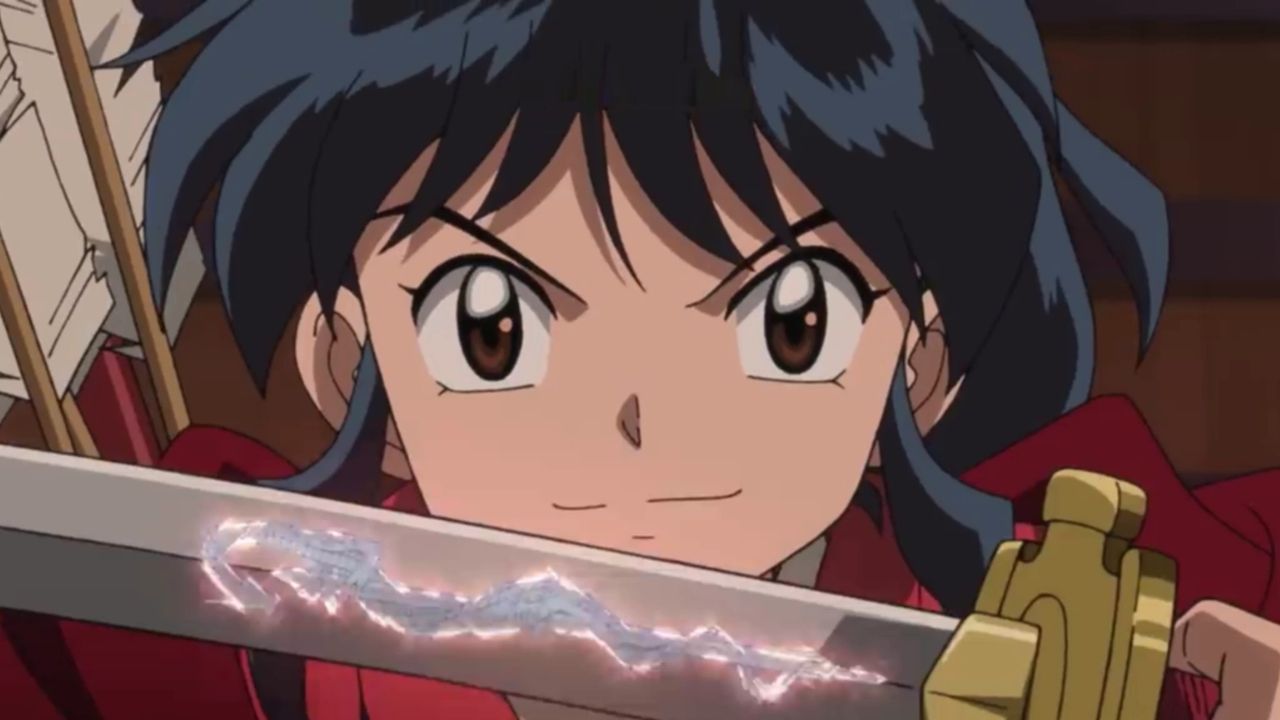
This is only a speculation, but it’s the strongest one circulating fans’ radar.
With a popular anime such as InuYasha, it’s understandable why Sunrise (the animation studio behind the franchise) is keeping many secrets from fans.
They want to keep the mystery intact. And the more mystery the series generates, the more questions fans asked (hence, the increase in viewership and ratings).
For now, little has been revealed about the subplots making up the 24-episode series (the episode count is verified by several streaming anime subscription-based services).
However, even if we cannot deep dive in analyzing why Moroha doesn’t remember her parents, we can speculate based on:
- the formulaic storyline of the parent series:
- InuYasha (2001-2004); and
- InuYasha: The Final Act (2010);
- Chapter 559 – the epilogue chapter of the InuYasha manga;
- anime-only scenes in Episode 1 of Yashahime;
- the opening and ending theme songs of Yashahime;
- Episode 1 of Yashahime; and
- Episode Previews
2. Hints Provided in the Anime
When the first episode of Yashahime dropped on October 3, many hints were conveyed to fans. Some of them were obvious, others were subtle.
To quench the thirst of long-time fans, here are six hints I can find after re-watching the trailer and the first episode of the series:
I. Hint #1: The 7 Flowers of Autumn/Fall
The seven fall flowers were briefly mentioned when Kagome and Sango walked home together. Fans might not catch it because their conversation about it was very brief.
But if you re-watch the first episode, you’ll likely wonder how the famous ‘seven autumnal flowers’ weaves itself in the story.

If you don’t know yet, the ‘seven flowers of autumn‘ are popular in Japan. That’s because they originated from the “Man’yōshū”, an 8th century classical Japanese poetry collection.
This anthology is an ancient treasure trove of knowledge because it was written by poet Yamanoue Okura during the Nara period (which happened sometime after 759 AD).
Kagome told Sango that poet Yamanoue is responsible for the “Man’yōshū”, which contains information on seven of Japan’s lovely flowers!
“Man’yōshū” also translates to “Collection of Ten Thousand Leaves” because 31-syllable poems and haikus have been written on it, including ones on the ‘seven fall flowers‘.
And if you’re not convinced yet about the importance of the fall season in Yashahime, rewatch “Break” (by Uru), the ending (ED) sequence of the show.
While original fans are reminded of the peaceful but mysterious ending music of the InuYasha series, they’ll also take notice of the theme song’s fall vibe!
Just look how Sunrise littered the ED with maple leaves:
- Moroha’s decorated banner in the background is full of delightful Japanese trinkets:
- Maple leaves – Found on the left side of the banner, these leaves strongly symbolize the seven autumnal flowers subplot in Yashahime.
- Cherry blossoms – Their light pink shades balance the dark red hues of the Temari balls and the red thread of destiny.
- Temari balls – These Japanese hand balls are made of expensive silk threads. A girl’s possession of one hand crafted Temari ball during the Muromachi Period (~1336-1573) implies of her noble status.
Temari balls appeared twice in the ending sequence: it showed up in Moroha’s banner background, as well as in the final cut scene of the ED.
Since we have three 14-year old girls going off on different adventures, their placement implies the playfulness and giddiness of three noble princesses!
Did you also know that Temari balls are prominently displayed in Demon Slayer?
Susamaru, a minor antagonist, used them to battle Tanjiro and Nezuko in Dr. Tamayo and Yushiro’s home during the Akasuka Arc!
- Red Thread of Destiny – This one is shown as a thick twirling knot in the banner; it could be a ribbon for all we know (as Moroha uses a red ribbon to tie her long black hair). But the red thread of destiny is also shown in the final ending sequence of “InuYasha: The Final Act” to imply that Kagome and InuYasha are fated to be together!
- Multi-petal flowers – These are found on the right side of the banner. They could be Nadeshiko (or Dianthus) as they are flowers included in the seven fall flowers; but they could also only serve as decoration for Moroha’s banner (along with the red checkered diamond patterns on the side).
- There is a breeze from right to left in the ED sequence. We can tell that there’s a breeze because of the way the wind blows the Japanese maple leaves! And if you look closely, the leaves fall and scatter from right to left of the screen.
- Finally, the final cut scene of the ED shows us the infamous rainbow pearls, several colourful Temari balls (which are probably hand crafted), and Japanese maple leaves scattered on top of colourful and expensive silk cloths!
II. Hint #2: The Rainbow Pearls
The rainbow pearls are everywhere in Yashahime’s media content!
- They’re quickly teased in Yashahime promotional videos as part of ‘Setsuna’s glowing right eye’.
- When the animation sequences for the opening and ending theme songs finally dropped, they’re in plain sight! The silver pearl even shines inside Towa’s left eye!
- ‘Yashahime’s official Japanese website’ also decorates its navigation sidebars with 8 rainbow pearls: gold, silver, red, pink, green, orange, blue, and black.
- Episode 2 shows Moroha possessing a red rainbow pearl. She kept it inside a small white seashell, which also contains the rouge lipstick she inherited from her family.
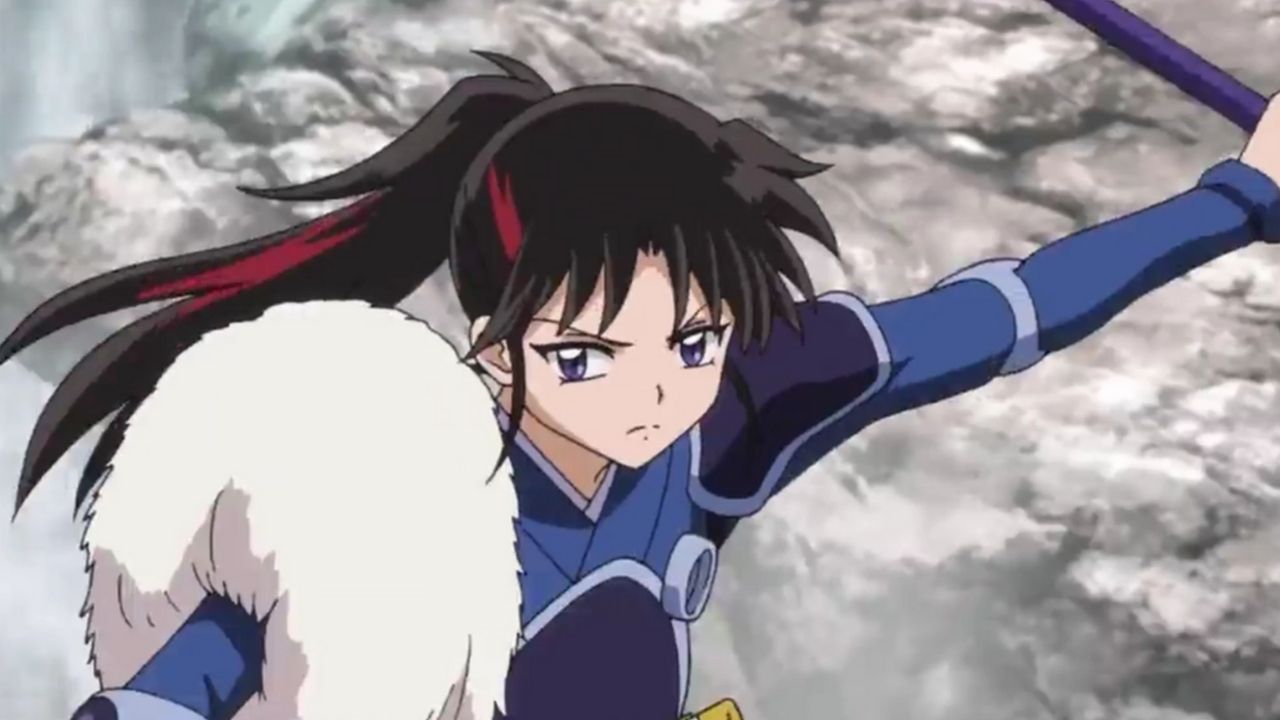
The rouge lipstick is nostalgic for original fans because Izayoi (InuYasha’s mother) also possess a similar item.
When InuYasha met Kikyô for the first time, he also gave her a rouge lipstick because she is the first woman he has learned to love.
It also seems that Moroha is bragging to her friends that she is the owner of a red rainbow pearl! Because it’s a keepsake, she hides the red pearl with her rouge lipstick.
It’s possible that each rainbow pearl corresponds to a member of the original series’ cast!
If the female trio wants to retrieve any of their lost memories about their parents, then they must collect all 8 rainbow pearls so that its powers can unfreeze time!
I know it sounds like a cliché plotline because it’s similar to the InuYasha series where the main cast must collect shards of the Shikon no Tama. But where else could the sequel go?
If it’s not collecting the rainbow pearls, how else could the trio get a hold of their parents? And unfreezing time? Is that even possible in the world of Yashahime?
Let’s say, for example, that the trio can pull the original cast from whichever timeline they are stuck onto. But they can only do this if they collect all rainbow pearls and match its powers to the corresponding fall flowers!
And since there are 7 fall flowers, we might as well choose 7 out of the 8 rainbow pearls:
- InuYasha – Red is the obvious choice for InuYasha, since he’s the leader and main character of the franchise; so, the red pearl goes to him.
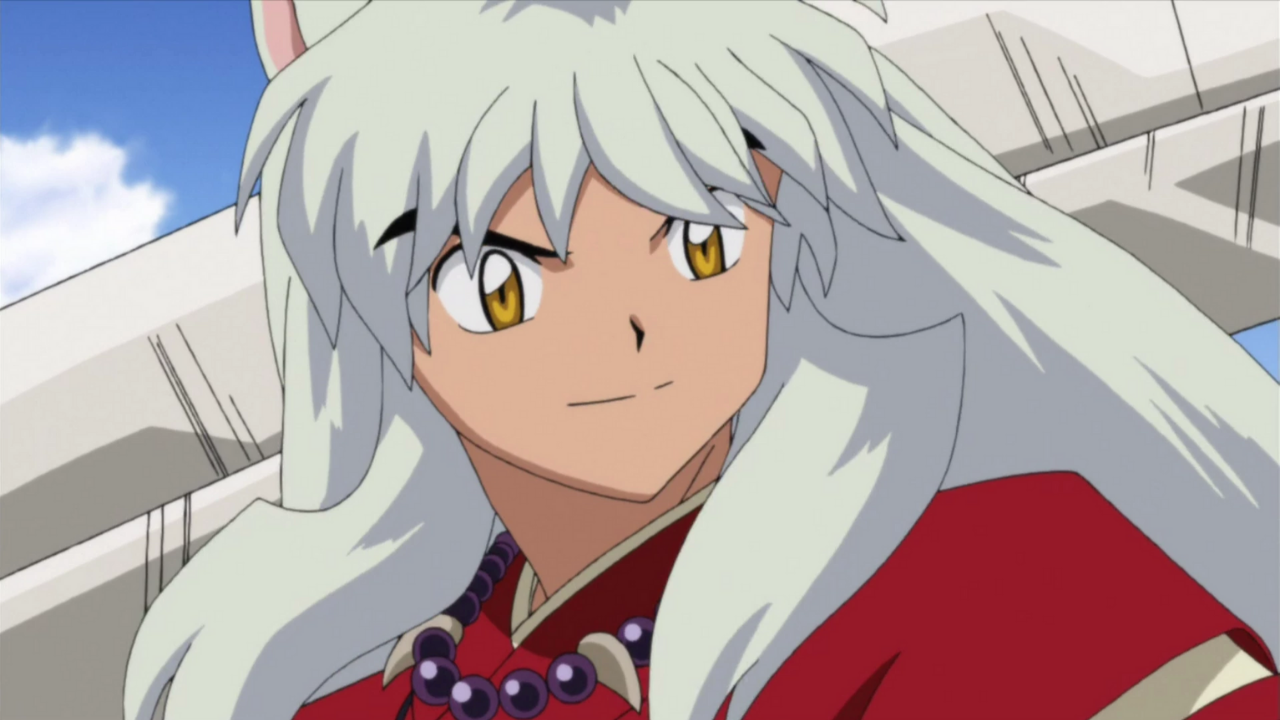
As for the flower, his weakness has always been Kikyô, so I’m going to assign “Asagao” (Japanese Morning Glory) to InuYasha.
After all, InuYasha’s fate was once tied to her because they were lovers even before the series began. Furthermore, the name Kikyô means Bell Flower or “Asagao”.
Also, as seen in Episode 2, Moroha’s red pearl is hidden inside a white seashell, which also contains her rouge lipstick (an item reminiscence of when Inuyasha gave Kikyô a rouge lipstick in the past before the start of the series).
- Kagome – The green pearl should be associated with Kagome because she is seen wearing a green school uniform skirt most of the time throughout the series.
As for the flower, I’ll assign the flower “Kuzu” to her, which is another word for “Japanese Arrowroot” (Kagome uses a bow and arrow as her primary weapon.) The “Kuzu” (Japanese Arrowroot) is also perfect for her because it symbolizes persistence and toil. Kagome’s strength grew throughout the series because she has overcome many trials with her friends.
- Miroku – As a Shinto priest, Miroku is suited to the blue pearl. His character screams blue most of the time, especially since he wears a dark blue haori on top of his Shinto ceremonial outfit.
Since he is a healer, the “Fujibakama” (or Thoroughwort) best suits him because this flower is also used for medicinal purposes.
- Sango – Sango (whose name means “Coral” in English) wears a pink-hued kimono most of the time in the original series; so, the pink pearl suits her. And since “Nadeshiko” (or Dianthus) petals range from pale pink to dark pink, it’s the perfect flower to match Sango’s caring aura.
- Shippō – His colour scheme screams gold, yellow, orange, or brown, throughout the original series; so, I’ll give him the orange pearl because the gold one is already taken by Rin.
His name means “Seven Treasures”; so, I’ll associate the multi-branched “Hagi” (or Japanese Bush Clover) to him. After all, bush clover petals cluster and clump around like mini treasures in shrub branches!
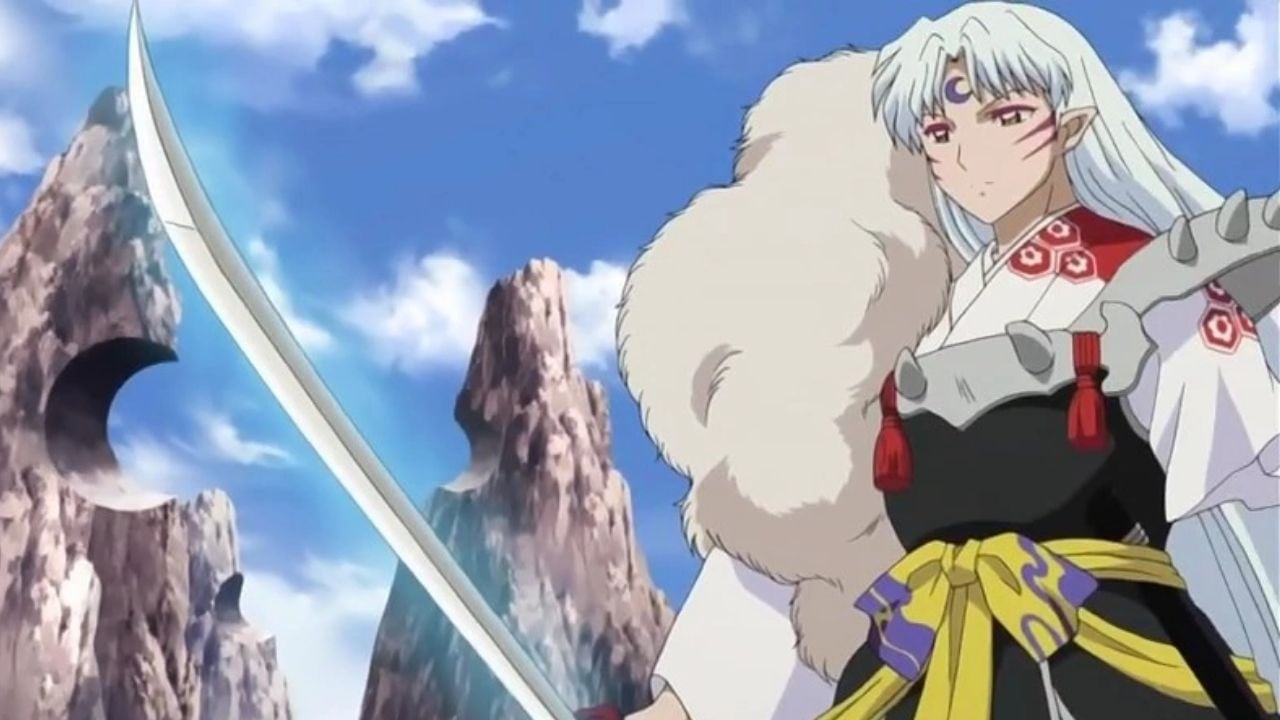
- Sesshōmaru – This one’s a no-brainer. His silver hair (like Towa’s) means that the silver pearl should be associated with him.
The “Obana” (or Japanese Susuki Grass or Pampas Grass) also comes in silver colours; so, we should match this flower to Sesshōmaru.
The OP also shows Towa’s left eye glowing; it is obviously the silver pearl!
- Rin – Rin had to die twice just for Sesshōmaru to learn the value that a human life carries. So, even if she’s not given that much screen time in the original series, many fans are speculating whether she is the mom of Towa and Setsuna.
It even begs the question, “Did Sesshōmaru propose to Rin? Is Rin the wife of Sesshōmaru?” To answer this question, there ‘a drama CD where Kagome narrates as if Sesshōmaru is proposing to Rin’! It’s not animated, but hopefully, it will in Yashahime.
Orange puts people in a jubilant and rejoiceful mood and Rin wears an orange kimono throughout and the series. But I’ll give her the gold pearl along with the “Ominaeshi” (also known as Patrinia Scabiosaefolia or Golden Lace Flower).
That’s because Episode 2 of Yashahime revealed that Setsuna’s right eye is glowing because of the gold pearl. So, it fits why Rin should have the gold pearl. The Ominaeshi’s bright yellow (or golden) petal buds also serve as proof that this flower deserves to be nicknamed “maiden flower” or “lady flower”. And it’s perfect for Rin since she’s an adorable girl whom fans are guessing turned into a lovely maiden in the show!
III. Hint #3: Towa’s History Textbook
You might be wondering, “What does a textbook have to do with the plot of the series?”
Well, many! Theoretically speaking, fans can expect to see Towa, Setsuna, and Moroha stumbling on a collection of poems. The poems could be scribed in a set of stones, a cave; written in a scroll, or even, found in Towa’s history book!
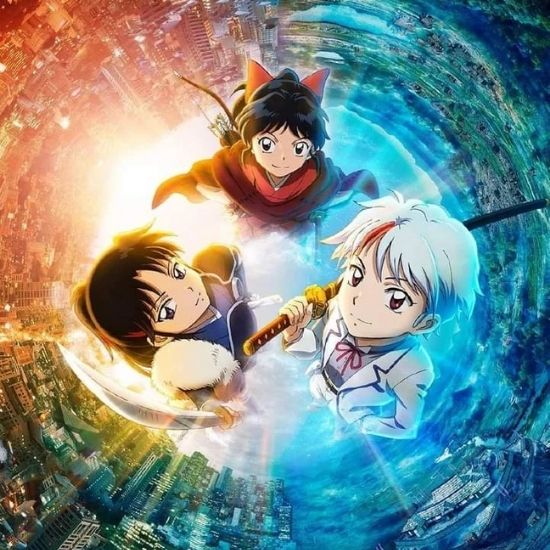
Yes, that’s right! Towa’s “New Social Studies and History” textbook! If you remember how episode 1 of Yashahime ended, Towa successfully retrieved her Japanese textbook from the Deputy Shogun of Kanto, her kidnappers.
She’s mighty pleased to get her hands on the book again. This could only mean one thing: that history textbook is plot-related and it’s right under our noses!
If you’re asking, “But wait! What does this have to do with Moroha’s inability to remember her parents?” Have no fear and let me tell you more about it!
We may not see Yamanoue as a supporting character in the series (he’s likely deceased since he lived during Japan’s 8th century after all). However, his name could be mentioned in the history textbook that Towa carries!
Moreover, that history textbook is important to Towa because she believes it is a guidebook to their adventurers!
If it serves as a guidebook that contains poems, incantations, or magical spells, it could help Moroha realize that she has loving parents, and that they’re pretty cool when they’re in action! 😊
While animators want fans to think that this show is about 14-year old girls or Half-Demon Princesses roaming around the Sengoku Jidai to fight demons, fans like us love theorizing ideas like the one below:
We are guessing that the trio were reunited so that they can help their parents escape from a frozen timeline!
Towa even emphasized in the ‘Yashahime trailer’, “Fate is in the hands of the next generation.” 😊
IV. Hint #4: The Tree of Ages
The Tree of Ages is a new time portal in the series. It’s a combination of the Goshinboku (the Sacred Tree) and the Bone-Eater’s Well. In a Yashahime teaser poster, it has been revealed that the tree has been dying! It’s not that obvious and fans might to zoom in on the poster to see it, but it’s definitely falling apart.
It is likely because Ne no Kubi (or Root Head demon) used the Goshinboku to transcend time & space. But as time goes by, it eats the Goshinboku Tree little by little from inside its tree hollows during the Reiwa Era (Japan’s name for the current era, which began on May 1, 2019). The ‘teaser for Yashahime’ goes even further to reveal that Ne no Kubi “gained” the power of the Tree of Ages!
Rumiko Takahashi loves choosing battle-hungry timelines for her InuYasha series. She believes it’s the perfect period to elevate the atmosphere of a feudal fairy tale!
In Yashahime’s case, she still uses the Sengoku Jidai timeline to highlight chaos, warfare, and social inequity during Japan’s bloody, but historical, warring states era.
And as we have seen, Episode 2 showed the formation of the magical tunnels in the Tree of Ages. And as fans correctly theorize, the magical passageways firmly hold the connection between the Reiwa Era and the Sengoku Jidai!
V. Hint #5: Sōta Higurashi’s Role
The official Japanese website of Yashahime revealed that 4-year old twins Towa and Setsuna were separated during a forest fire.
Towa got lost, and she wondered in the passageways of the Tree of Ages until she met Moroha’s maternal uncle, Sōta Higurashi (Kagome’s younger brother).

Fans might not see Sōta often in the series as he’ll remain a minor character. But excluding Sōta from the ‘characters page of the Yashahime website’ on the premiere of Episode 1 on October 3 adds salt to injury!
The characters page update after the premiere of each episode. That’s why Sōta wasn’t in the official website’s character page until after Episode 2 premiered on October 10.
We love Sōta and we’re glad to see him establishing his own family, marrying Hitomi (named Moe Higurashi in Yashahime), and taking care of one daughter, Mei Higurashi (Moroha’s maternal cousin).
But aside from adopting Towa, my only prediction about Sōta’s role in the sequel is that he also forgets Kagome! If Moroha is oblivious to her parents’ existence, Sōta might have had his memories erased!
He might not recall that Kagome is his older sister, and that she traveled on numerous adventures in the Sengoku Jidai with a hanyô (or half-demon) named InuYasha!
VI. Hint #6: Anime-Only Scenes in Adapting Chapter 559
As you know, half of episode 1 of Yashahime is an adaptation from Chapter 559 (the epilogue chapter of the InuYasha manga series).
The quick but important exchange between Kagome and Sango about the seven fall flowers is an anime-only scene. Perhaps Sunrise inserted that scene in adapting Chapter 559 so they can flesh out the first episode even more.

And did you also know that ‘Chapter 559 was released by Shōnen Sunday to aid victims of natural disasters’? The mangaka for InuYasha (Rumiko Takahashi) participated in “Heroes Come Back” to do this.
Established in 2013, this charity aimed to raise funds so it can help people who have lost their homes from the 2011 Tohoku earthquake and the tsunami disaster. Sango even mentioned in this chapter that a tomb broke open due to a landslide!
The mangaka intentionally put this in her dialogue to reference the 2011 natural calamities!
If readers were aware of the destructive capacities of the earthquake and typhoon on Japan, the charity would attract more donors to help increase the funds.
And while drawing the epilogue chapter to raise money for the 2011 earthquake and typhoon victims, she was also ‘conceptualizing the sequel’s storyline in her head’.
She mentioned in an interview that the original cast are absent in her head canon of Chapter 559 because ‘something happened that night to cause them to be absent by the end of Episode 1’.
That “something” points to an event causing the original cast to disappear by the time fans see Towa, Setsuna, and Moroha on screen in episode 1. Whatever event that may be, fans will likely find out as the series progresses.
3. Putting it All Together
With all this information in our hands, this leads us back to the question why Moroha cannot recall her parents, much less know their faces or their names.
Just as I’ve said before, the adults may be frozen in time, and may be stuck between the netherworld and the living world.
Also, looking back in previous InuYasha episodes, one way for living beings to travel to the world of the dead is by extracting a black pearl (the 8th pearl) inside one’s eye.
This is how Sesshōmaru and InuYasha managed to travel to the skeletal cemetery of their father, Tōga (also known by many names: The Great Dog Demon, Inu no Daiyōkai, and Inu no Taisho) in the third movie of InuYasha: Swords of an Honourable Ruler.
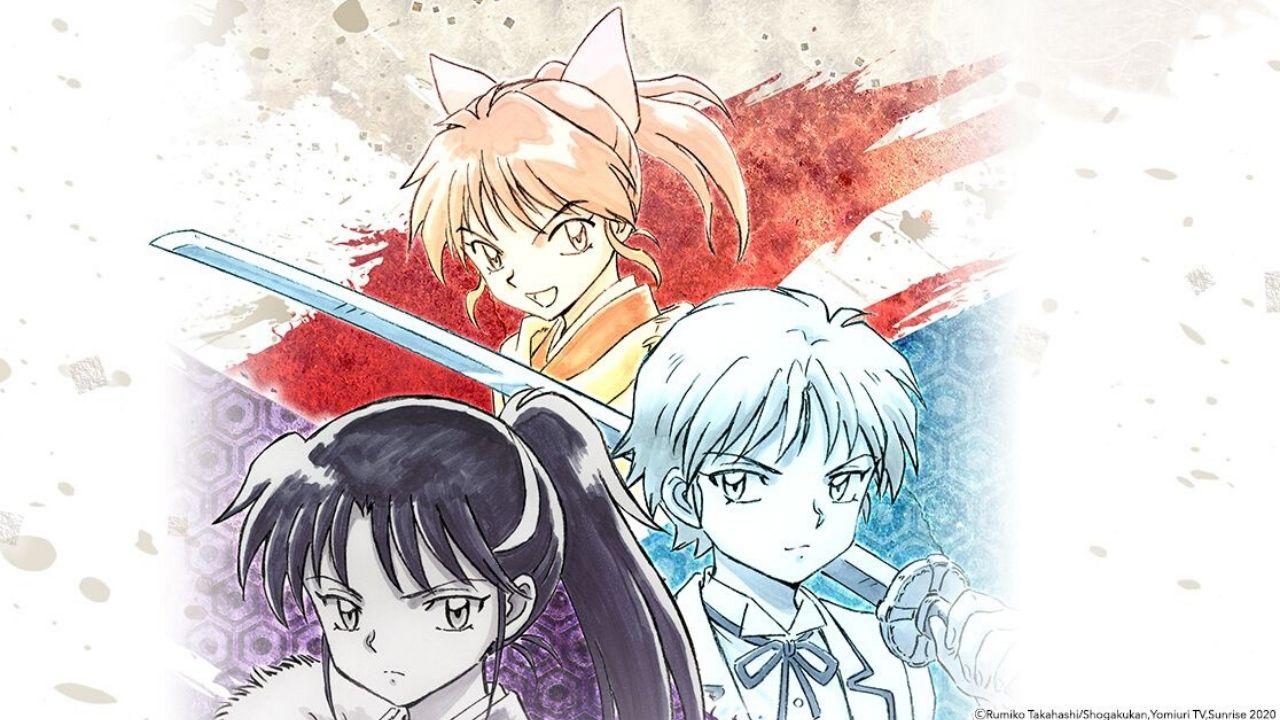
Perhaps the adults (except for Kaede, Hisui, and Kohaku) are just stuck somewhere in the Tree of Ages’ passageway. And since they’re stuck, they might have stopped aging (which means we get to see them at the age as of Chapter 559) How exciting! 😁
In any case, that explains why Moroha was left alone to fend for herself by selling demon’s body parts. 😢 Poor kid. Her father was an outcast in the demon and human world. And now, history repeats itself by letting Moroha, a quarter demon, live all by herself.
If you want to know the complete story on Moroha and her relationship with her parents, why not head onto FUNimation, Crunchyroll, Hulu, AnimeLab, or VRV? You’ll get to know more of the characters and ride along in their adventures!
As for me, InuYasha is my childhood anime. When Yashahime premiered, all the nostalgia returned just by seeing these three lovely girls! I can’t wait for more episodes of this series!
4. About InuYasha
InuYasha, also known as InuYasha: A Feudal Fairy Tale, is a Japanese manga series written and illustrated by Rumiko Takahashi.
InuYasha premiered in Weekly Shōnen Sunday on November 13, 1996, and concluded on June 18, 2008, with its 558 chapters collected into 56 tankōbon volumes by Shogakukan.
Kagome Higurashi, a 15-year-old schoolgirl, gets transported to the Sengoku Jidai period of Japan after falling into a well in her family shrine. There she meets the half dog-demon, InuYasha.
Kagome possesses a powerful magical Shikon Jewel. When a monster from that era tries to take the jewel, Kagome shatters the jewel into many pieces. Now, Kagome and InuYasha must retrieve the shards before the evil half spider-demon Naraku finds them!
5. About Hanyô no Yashahime
Hanyô no Yashahime follows the adventures of Sesshomaru’s half-demon twin daughters, Towa and Setsuna. When they were young, the half-demon twins were separated from each other during a forest fire.
While desperately searching for her younger sister, Towa wandered into a mysterious tunnel that sends her into present-day Japan.
She is found and raised by Kagome Higurashi’s brother, Sota, and his family. Ten years later, the tunnel that connects the two eras has reopened!
This allowed Towa to be reunited with Setsuna, who is now a Demon Slayer working for Kohaku. But to Towa’s shock, Setsuna appears to have lost all memories of her older sister.
Joined by Moroha, the daughter of InuYasha and Kagome, the three young women travel between the two eras on an adventure to regain their missing past.
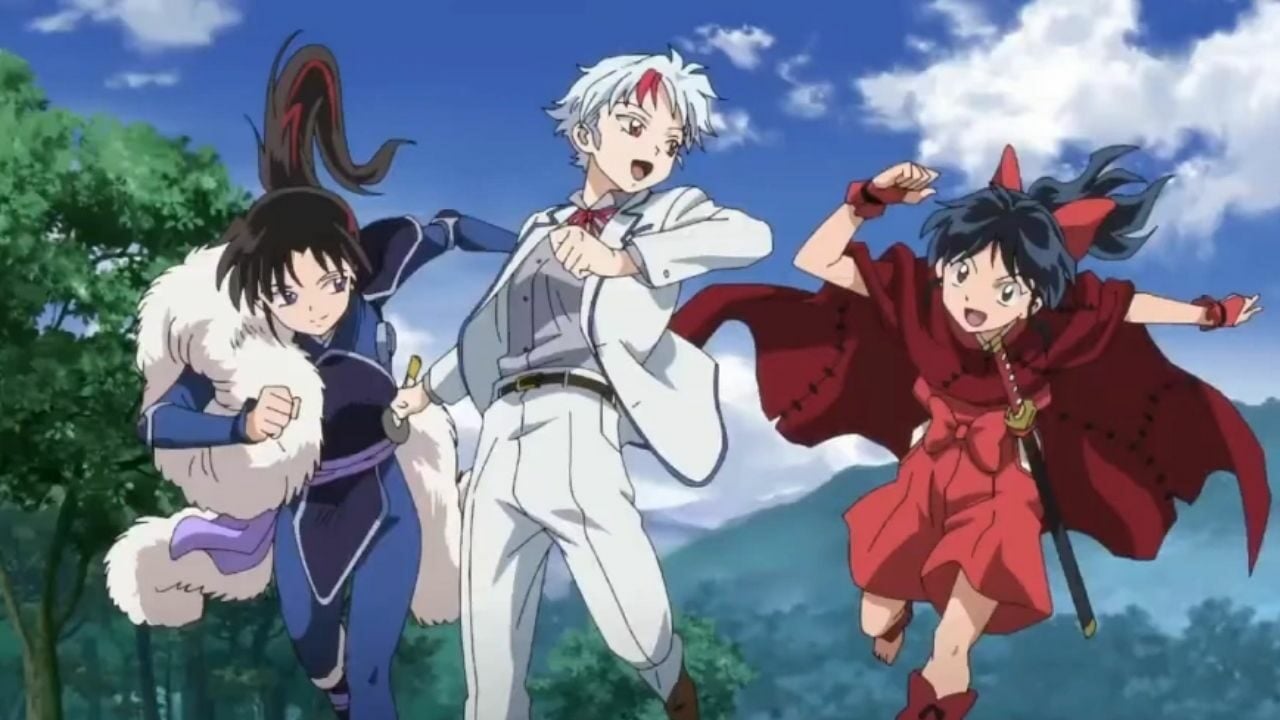
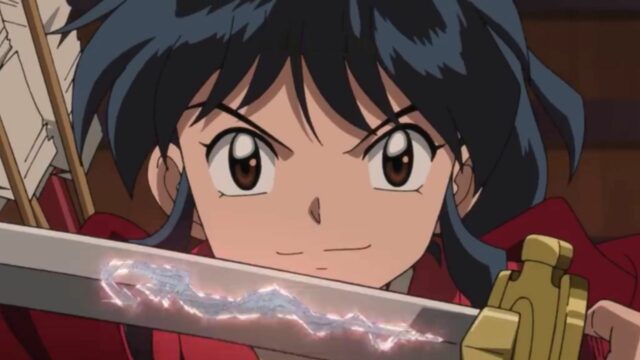
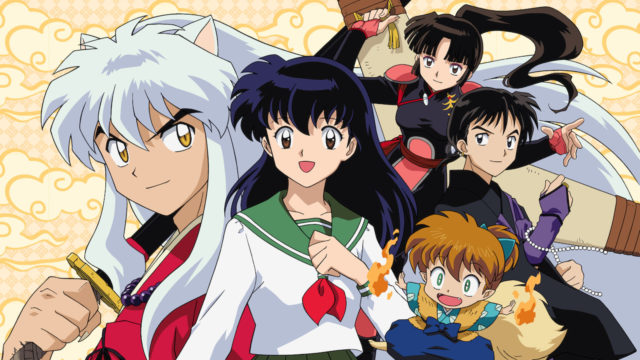
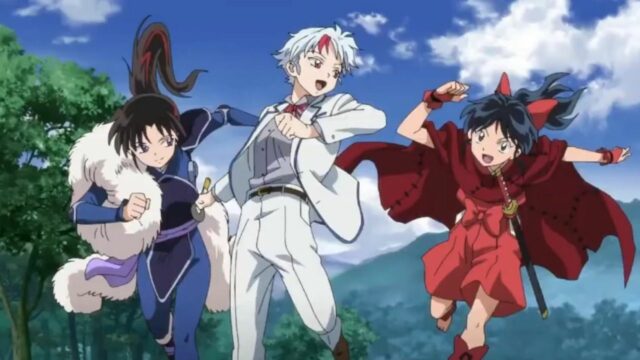
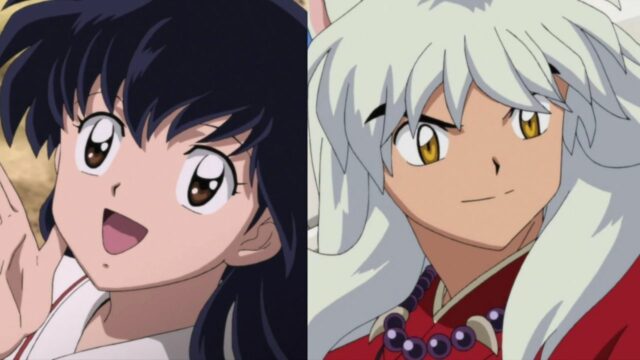
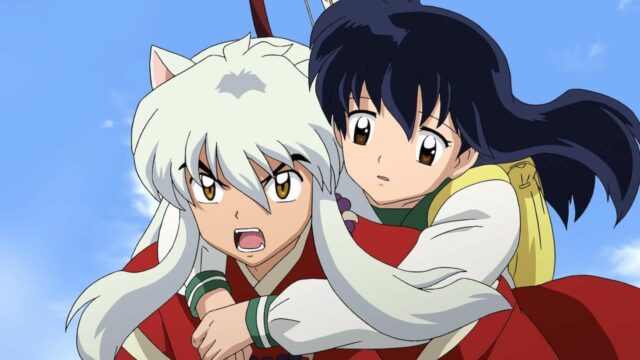
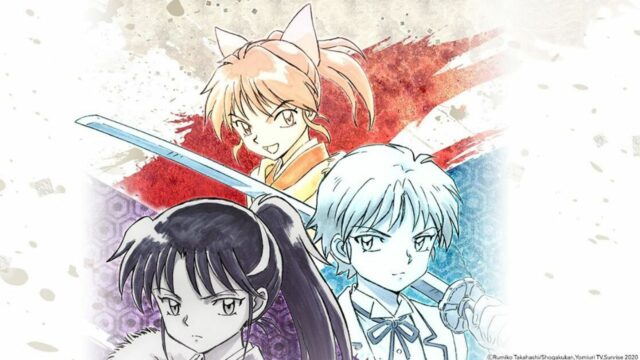
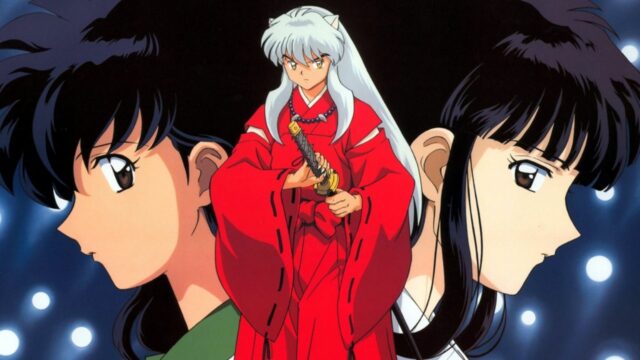

No Comments on Why Doesn’t Moroha Remember Her Parents in Hanyô no Yashahime?